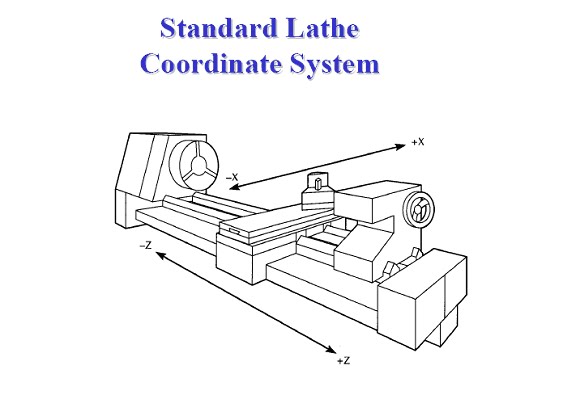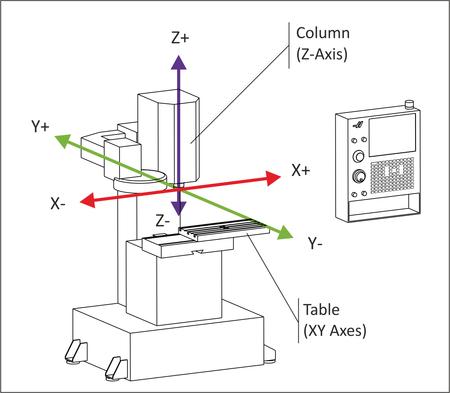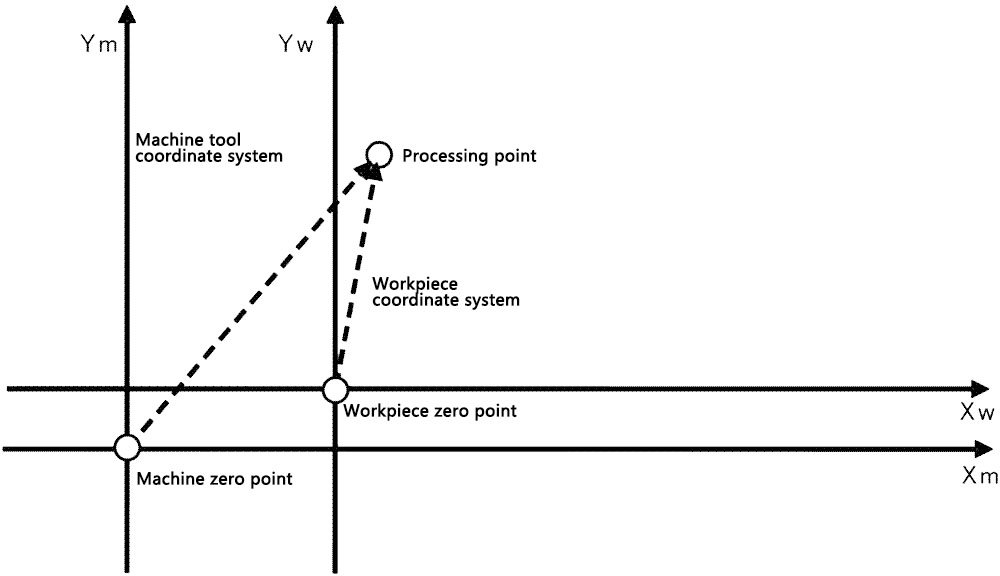Understanding the coordinate system is paramount in the intricate world of CNC lathe machining. It forms the backbone of precise tool movements and intricate workpiece positioning. This article delves deep into the fundamentals, components, setup, programming, troubleshooting, and advanced applications of CNC lathe coordinate systems. Mastering these systems will unlock a realm whether you are a novice or a seasoned professional.
In CNC lathe machining, the coordinate system is the cornerstone of precision and control. At its core, it defines the spatial relationship between various points within the machining environment.

In its most common manifestation, the Cartesian coordinate system reigns supreme. It employs a three-dimensional grid comprising X, Y, and Z axes intersecting at right angles. This system facilitates precise movement and positioning along linear paths, enabling intricate machining operations with unparalleled accuracy.
The Cartesian coordinate system is not the only player in this arena. Enter the polar coordinate system, offering an alternative approach to spatial representation. Unlike its Cartesian counterpart, the polar system relies on radial distance and angular displacement from a central reference point. This configuration proves particularly useful for tasks involving rotational movements or circular patterns, providing a unique perspective on machining dynamics.
Understanding the Cartesian framework's X, Y, and Z axes is crucial. The X-axis represents the horizontal movement along the machine's bed, the Y-axis denotes vertical movement along the cross-slide, and the Z-axis signifies movement perpendicular to the machine's bed. Mastery of these axes grants machinists unparalleled control over tool movements in three-dimensional space, ensuring precise execution of complex machining tasks.

Grasping the concept of positive and negative directions along each axis is fundamental. Positive directions indicate movement from the machine's reference point, facilitating forward motion along the axis. Conversely, negative directions denote movement towards the reference point, allowing for reverse motion along the axis. This understanding is pivotal for orchestrating intricate tool paths and workpiece manipulations, ensuring optimal utilization of machining resources.
The fundamentals of CNC lathe coordinate systems underpin the entire machining process. Whether navigating the Cartesian grid or embracing the polar paradigm, machinists must comprehensively understand spatial dynamics. By mastering the X, Y, and Z axes and discerning positive and negative directions, machinists unlock the full potential of CNC lathe machining, transforming raw materials into precision-engineered components with unparalleled finesse.
In the intricate ecosystem of CNC lathe machining, the coordinate system comprises several essential components, each pivotal in orchestrating precise tool movements and workpiece manipulations.
At the heart of the coordinate system lies the machine reference point, often referred to as the origin. This point is the cornerstone of spatial reference within the machining environment, establishing a fixed starting point for all subsequent operations. Proper calibration and alignment of the reference point are essential, as deviations can lead to inaccuracies and inconsistencies in machining processes.
The workpiece coordinate system is adjacent to the machine reference point, which defines the spatial relationship between the machining tool and the workpiece. This system enables machinists to precisely position and orient the workpiece relative to the tool, facilitating intricate machining operations with unparalleled accuracy. Calibration of the workpiece coordinate system is paramount, ensuring optimal alignment and synchronization between tool movements and workpiece dimensions.

Complementing the workpiece coordinate system is the tool coordinate system, which governs the spatial dynamics of the machining tool itself. This system enables machinists to define the tool's position, orientation, and movement within the machining environment, facilitating precise tool engagements and material removal. Calibration of the tool coordinate system is crucial, as inaccuracies can result in suboptimal tool paths and compromised machining quality.
The coordinate system incorporates tool offsets, allowing for fine-tuning and adjusting tool positions to accommodate variations in workpiece geometry and machining requirements. Tool offsets enable machinists to compensate for discrepancies between programmed and actual tool positions, ensuring consistent machining performance and dimensional accuracy.
The components of the CNC lathe coordinate system converge to form a cohesive framework for precision machining operations. From establishing the machine reference point to calibrating workpiece and tool coordinate systems, each component plays a crucial role in ensuring optimal machining performance and quality.
Setting up the CNC lathe coordinate system is crucial in ensuring precise and efficient machining operations. It involves several key procedures to establish accurate spatial references and alignments within the machining environment.
First and foremost is the establishment of the machine reference point. This process involves defining a fixed starting point within the CNC lathe's workspace, serving as the origin for all subsequent operations. Machinists meticulously calibrate and verify the accuracy of the reference point, ensuring consistent and reliable spatial reference throughout the machining process. Next, aligning the workpiece coordinate system is essential for precise positioning and orientation of the workpiece relative to the machining tool. Machinists meticulously align the workpiece coordinate system with the machine reference point, ensuring optimal synchronization between tool movements and workpiece dimensions.
Setting the tool coordinate system simultaneously is crucial for defining the spatial dynamics of the machining tool within the CNC lathe's workspace. Machinists carefully configure the tool coordinate system to accurately represent the tool's position, orientation, and movement, facilitating precise tool engagements and material removal.
Finally, calibrating tool offsets allows machinists to fine-tune and adjust tool positions to accommodate variations in workpiece geometry and machining requirements. This process ensures consistent and accurate machining performance, enabling machinists to achieve desired dimensional tolerances and surface finishes with precision and reliability.
By meticulously executing these setup procedures, machinists establish a robust and reliable CNC lathe coordinate system, laying the foundation for optimal machining performance and quality.
A comprehensive understanding of G-code fundamentals, tool movements, workpiece positioning, and tool offsets is essential for programming the CNC lathe coordinate system. Mastery of these aspects empowers machinists to orchestrate intricate machining operations precisely and efficiently.
G-code is a standardized language used to command and control the machine's movements and actions at the core of CNC lathe programming. Machinists utilize G-code commands to specify tool paths, tool speeds, feed rates, and other crucial parameters, translating design specifications into actionable instructions for the CNC lathe.
Programming tool movements is a fundamental aspect of CNC lathe programming. It enables machinists to dictate the trajectory and orientation of the machining tool during the manufacturing process. Machinists employ G-code commands to command tool movements along predefined paths, facilitating precise material removal and shaping operations.
Workpiece positioning and orientation are critical considerations in CNC lathe programming, as they directly impact the accuracy and quality of the finished product. Machinists meticulously program the CNC lathe to position and orient the workpiece according to design specifications, ensuring optimal alignment and synchronization between the machining tool and the workpiece.
Incorporating tool offsets into CNC lathe programming allows machinists to compensate for variations in tool geometry and workpiece dimensions, ensuring consistent and accurate machining performance. Machinists meticulously calibrate and configure tool offsets within the CNC lathe's control system, enabling precise control over tool positions and engagements during manufacturing.
Programming in the CNC lathe coordinate system requires technical proficiency, creative problem-solving, and attention to detail. Machinists must leverage their knowledge of G-code basics, tool movements, workpiece positioning, and tool offsets to orchestrate seamless machining operations and produce high-quality components.
Common coordinate system errors can impede machining accuracy and efficiency. Comprehending and applying effective troubleshooting techniques is crucial to maintain optimal performance and minimize production downtime.
One prevalent error is the incorrect setup of the machine reference point. Misalignment or miscalibration of the reference point can lead to deviations in tool paths and workpiece positioning, resulting in dimensional inaccuracies and compromised machining quality. Machinists must meticulously verify and adjust the machine reference point to ensure accurate spatial reference throughout the machining process.
Another common issue is the misalignment of the workpiece or tool coordinate system. Inaccurate alignment can lead to discrepancies between programmed and actual tool movements, causing machining errors and surface finish defects. Machinists must carefully inspect and realign the workpiece and tool coordinate systems to ensure optimal synchronization and accuracy during machining operations.
Tool offset errors represent another significant challenge in CNC lathe machining. Variations in tool geometry or incorrect offset values can result in tool collisions, dimensional inaccuracies, and surface finish defects. Machinists must meticulously calibrate and verify tool offsets, ensuring consistent and reliable tool positioning and engagement throughout the machining process.
Machinists employ various diagnostic techniques and troubleshooting strategies to identify and rectify coordinate system errors. Visual inspection, measurement, and test cuts are commonly used to identify errors and deviations in tool paths and workpiece dimensions. Once identified, machinists can adjust machine parameters, realign coordinate systems, or recalibrate tool offsets to rectify errors and restore optimal machining performance.
Additionally, preventive maintenance practices such as regular machine calibration and inspection can help mitigate the risk of coordinate system errors. Machinists can minimize downtime, maximize productivity, and ensure consistent machining quality by proactively monitoring and maintaining CNC lathe systems.
Subprogramming and macros offer a streamlined approach to CNC lathe programming by enabling the creation of reusable code segments. Machinists can define complex sequences of commands as subprograms or macros, simplifying the programming process and enhancing code readability. This technique minimizes programming errors, promotes code modularization, and facilitates rapid prototyping and iteration.
Coordinate system transformations allow machinists to seamlessly transition between different coordinate systems within the CNC lathe environment. Machinists can perform intricate machining operations with greater flexibility and precision by manipulating coordinate transformations. This technique is particularly valuable for complex workpiece geometries or unconventional machining orientations.
Multi-axis machining expands the capabilities of CNC lathes by enabling simultaneous movement along multiple axes. Machinists can leverage multi-axis machining to produce complex geometries, intricate contours, and highly sculpted surfaces with unparalleled precision and efficiency. This technique unlocks new possibilities in part design and manufacturing, allowing machinists to push the boundaries of what is achievable with traditional machining methods.
Adaptive control systems enhance CNC lathe performance by dynamically adjusting machining parameters in response to changing conditions. These systems utilize sensor data and real-time feedback to optimize tool paths, speeds, and feeds, maximizing productivity and minimizing machining errors. Adaptive control systems ensure consistent machining quality and efficiency by adapting to variations in material properties, tool wear, and environmental factors.
The future of CNC lathe coordinate systems lies in automation and seamless integration with CAD/CAM software. Progress in automation technologies, such as AI and machine learning, will enable autonomous machining processes with minimal human intervention. Integrating CAD/CAM systems will facilitate seamless data exchange, real-time toolpath optimization, and digital twin simulations, revolutionizing how CNC lathes are programmed, operated, and optimized.
Adopting Industry 4.0 principles will reshape the landscape of CNC lathe coordinate systems, driving greater connectivity, interoperability, and data-driven decision-making. Smart factories equipped with networked CNC lathes will enable seamless production planning, scheduling, and execution, optimizing resource utilization and minimizing downtime. Real-time monitoring and predictive maintenance capabilities will ensure maximum uptime and operational efficiency, enhancing manufacturing productivity.
Future advancements in CNC lathe coordinate systems may include novel machining techniques, materials, and processes that push the boundaries of conventional manufacturing. Emerging technologies such as additive manufacturing, hybrid machining, and in-situ metrology will enable new capabilities in CNC lathe machining, enabling the production of complex, lightweight, and customized components with unprecedented efficiency and precision. Additionally, advancements in materials science, tooling technology, and cutting-edge research will continue to drive innovation in CNC lathe machining, shaping the future of manufacturing for years to come.
Mastering the intricacies of CNC lathe coordinate systems is essential for achieving precision, efficiency, and innovation in manufacturing. From fundamental principles to advanced techniques and future trends, this article has provided a comprehensive overview of the critical role that coordinate systems play in CNC lathe machining. By embracing these concepts and staying abreast of emerging technologies, machinists can unlock the full potential of CNC lathe machining, driving continuous improvement and excellence in manufacturing.